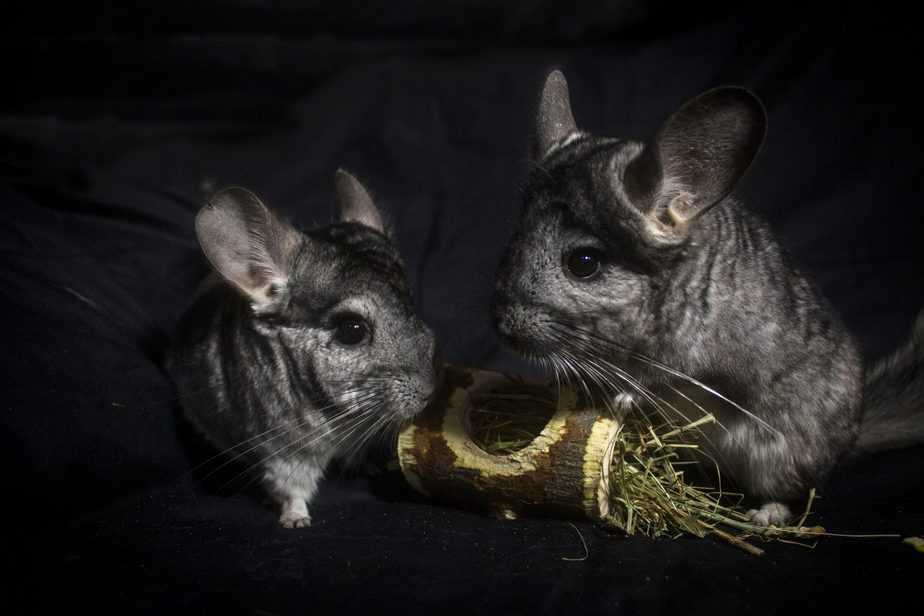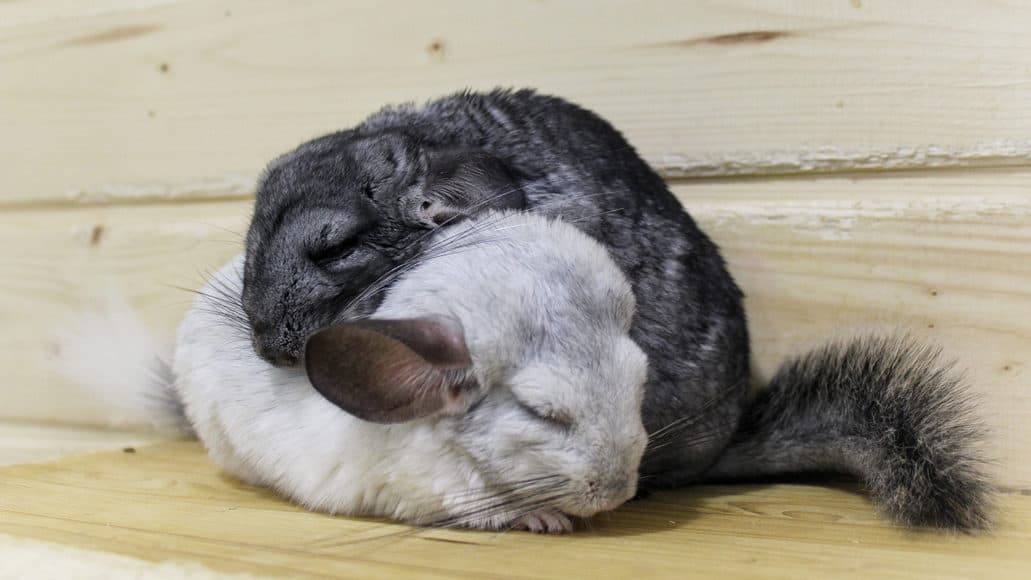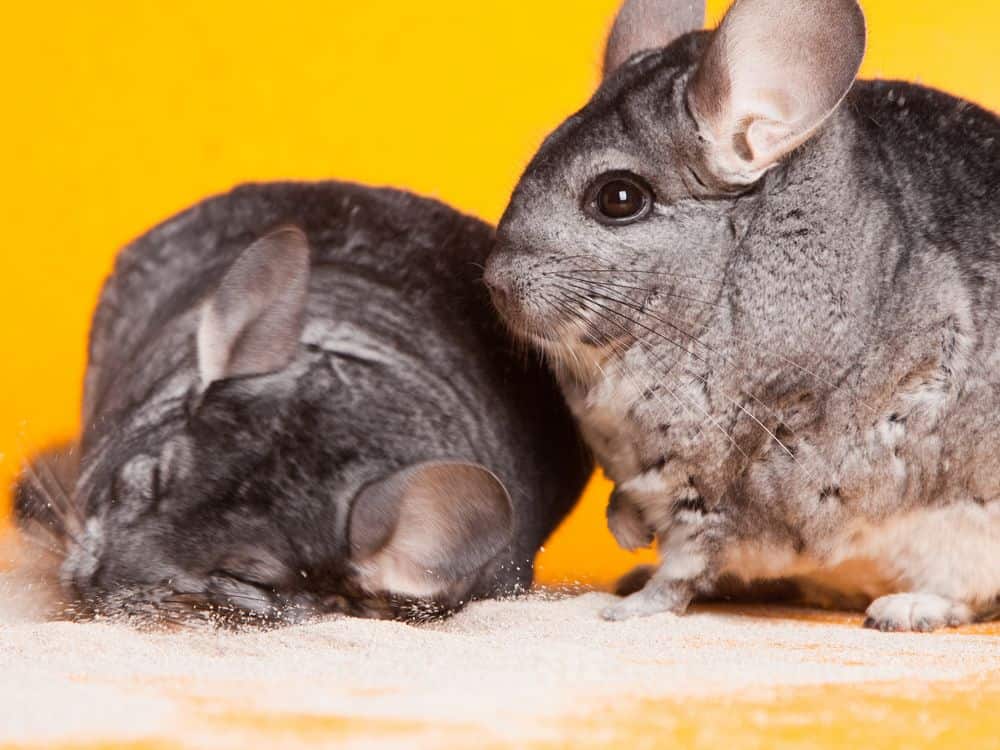
That a single one will get lonely.
It is true they are social animals and keeping at least two is better.
But if you spend at least an hour a day playing with yours, keeping a single chinchilla is fine, too.
If you do decide to get a second pet, you’ll need to know how to bond chinchillas correctly.
You want to ensure they get along.
Luckily, that’s exactly what we are going to help you with today. Keep reading for a step-by-step guide that will help you bond you chinchillas successfully.
Contents
- 1 How To Bond Chinchillas
- 1.1 Step 1: Determine Their Genders
- 1.2 Step 2: Put The Two Chinchillas In Separate Cages Placed Side-By-Side
- 1.3 Step 3: Transition Them To The Same Cage
- 1.4 Step 4: Supervise And Observe
- 1.5 Step 5: Understand Dominance Between Chinchillas
- 1.6 Step 6: Watch Out For Signs Of Fighting And Bullying
- 1.7 Step 7: Re-Evaluate Their Environment
- 1.8 Step 8: Stick To A Daily Routine For Both Pets
- 2 How To Introduce Chinchillas: Final Thoughts
How To Bond Chinchillas
Bonding chinchillas is not difficult. It just takes some time. Follow the steps below and don’t rush things. Before long, your chins will be used to each other and hopefully get along splendidly.
Step 1: Determine Their Genders

The first step in getting chinchillas to bond with each other is to determine their genders. If you buy your chinchillas from a reputable breeder or from a pet shop, the experts there can help you determine the sex of the animals. If needed, consult a vet.
Best Chinchilla Pairs
- You may pair two male or two female chinchillas together. Pairing chinchillas of the same gender significantly increases their chances of bonding without fighting. If you plan to house chinchillas of opposite genders together, then introduce them when they are young.
- Understand that when you place a male and female chinchilla together, they will mate, even if they are siblings. Do note that chinchilla neutering is an extremely complicated procedure, so it is best not to pair a male and female together unless you are an experienced chinchilla breeder.
Step 2: Put The Two Chinchillas In Separate Cages Placed Side-By-Side
Place each chinchilla in a separate cage and keep the cages close together, side-by-side. This will allow the animals to smell and see each other while preventing fights.
This setup is also useful during the quarantine period if you have recently bought another chinchilla from outside. This will help ensure that the new chinchilla is healthy and free from mites and other parasites.
The next day, swap their cages. Putting them in the other’s cage will get the two animals used to each other’s scent. Continue swapping their cages for at least 3 to 4 days, until you are sure there are no signs of aggression.
Step 3: Transition Them To The Same Cage

Once the two chinchillas seem to tolerate each other in their separate cages, it is time to place them together in the same cage. Follow these guidelines to ensure that the two pets have few reasons to fight over:
- Provide a spacious and roomy cage: ensure that the chinchilla enclosure or cage is wide, roomy, and spacious. A pair of chins will need a cage that is at least 35.4 (L) by 23.6 (D) by 47.2 (H) inches (90 x 60 x 120 cm). A small, cramped cage will stress your pets and lead to fights. This is not conducive to bonding between the animals.
- Fill up the cage with fresh, clean bedding.
- Provide plenty of new toys, chewing blocks, tunnels, hideouts, and perches for each chinchilla.
- Make sure each chinchilla has separate toys, beds, food, and water bowls.
Pro Tip: If you have just two cages and plan to place both animals in a single, larger cage, then first clean that cage thoroughly. Fill it up with clean fresh bedding, new toys, etc. This way, the cage won’t have the scent of its occupant.
Step 4: Supervise And Observe
Once you have placed both chinchillas in one cage, it is time to observe them. Ask yourself the following questions:
- Are the two chinchillas interacting peacefully and playing with each other?
- Does one chinchilla seem more aggressive toward the other?
- Are they ignoring each other?
It is important to ensure that the two chinchillas are not fighting with each other. If they are, it may be best to separate them temporarily. You can put one of the chinchillas back inside a smaller cage and try to introduce the two again the next day.
Step 5: Understand Dominance Between Chinchillas

Understand that chinchillas sometimes fight to establish dominance. One chinchilla might appear submissive, while the other will be dominant. The dominant one might chase the submissive one, and there will be plenty of squeaking.
This is normal behavior, although it can be distressing to watch. Worry not. The two pets will settle down soon. Do not interfere. Here are some signs of dominance in chinchillas. Knowing these signs will help you know what to expect:
- The dominant chinchilla might climb or jump on top of the submissive chinchilla.
- Once the chinchilla at the bottom squeaks, the top chinchilla will release it.
- Such a display of dominance will occur several times over the coming weeks.
- When the chinchillas are squabbling and establishing dominance, do not pull them away from each other. This could confuse and stress them. Let the animals deal with it.
Step 6: Watch Out For Signs Of Fighting And Bullying
Signs of fighting between chinchillas include biting, growling, hissing, snapping, snarling, cornering, and chasing. These are not signs of normal dominance. If your pets are fighting, you might observe the following:
- One chinchilla won’t allow the other to eat, drink, or sleep
- The bullied chinchilla may appear anxious, stressed, or scared. It might have dull fur or fur loss. It might lose weight and stop playing with the other chinchillas and even with you. Some bullied chinchillas also show aggressive behavior.
If you notice these signs, it may be best to separate the chinchilla from the bullies. Provide it with another cage and see if its health improves.
Once you have separated the bullied chinchilla from the aggressive chinchilla, do not bring them together again. You can let them out at different times to play and interact with you. Understand that your chinchillas could start fighting again if you bring them together again.
Step 7: Re-Evaluate Their Environment

An essential part of understanding why chinchillas fight with each other is to consider their environment. Perhaps the cage is too small or there aren’t enough resources, which may have led to the fighting.
- Try providing a bigger cage with multiple levels, plenty of toys, chewing blocks, and separate food, hay, and water bowls.
- Chinchillas do not like sharing beds, so make sure they both have separate bedding, hideouts, and nesting boxes.
- Ensure that there are no blind corners or tight spaces where the two chinchillas could get trapped or stuck together.
Step 8: Stick To A Daily Routine For Both Pets
Show the same care and attention to both chinchillas. Stick to a schedule for playing, feeding, and interacting with each one.
This is important to reduce tension between both pets and help them bond with each other. Once the two chinchillas spend more time with each other, their aggression will decrease, and they will be more tolerant of each other.
How To Introduce Chinchillas: Final Thoughts
Introducing two chinchillas is much easier if you know how to bond chinchillas correctly. And if you follow the steps above, you should not have any issues.
As mentioned, the key is to be patient. Don’t rush things. Let your chinchillas get used to each other at their own pace. If they need more time on any of the steps above, give them more time. A big part of caring for a chinchilla is patience. Read our chinchilla care guide for more.
Matt says
Left out stuff that will prevent issues and so e that can ensure success